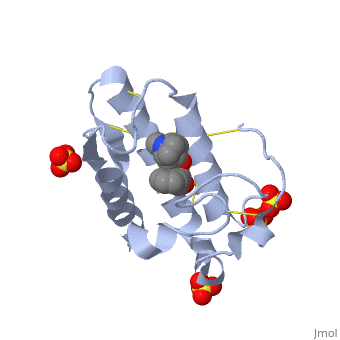Atropine
From Proteopedia
| Please do NOT make changes to this Sandbox. Sandboxes 30-60 are reserved for use by Biochemistry 410 & 412 at Messiah College taught by Dr. Hannah Tims during Fall 2012 and Spring 2013. |
Contents |
Atropine
Introduction
(image, atropine)
Atropine is an alkaloid drug derived from levohyscocyamine, a plant compound found in the family Solanaceae[1]. It is a competitive inhibitor of both acetylcholine and phospholipase 2 and has a variety of effects on both humans and animals. Although it is poisonous, in the correct dosages it has a wide variety of medical uses in both human and veterinary medicine.
Function
Atropine is part of the tropane group alkaloid family, which includes other substances such as cocaine. Atropine binds to acetylcholine receptors, blocking the action of acetylcholine and therefore suppressing the actions of the parasympathetic nervous system[2]. In humans, it is metabolized approximately 50%, hydrolyzed to tropine and toropic acid, and the remaining unchanged drug is excreted in the urine[3].
Since atropine affects the parasympathetic nervous system, it has a wide variety of effects. It is largely used as an ophthalmic drug, as it paralyzes the accommodation reflex and dilates the pupil[4].
History
|
References
- ↑ Atropine. Encyclopedia Brittanica. http://www.britannica.com/EBchecked/topic/42015/atropine
- ↑ Atropine. New World Encyclopedia. http://www.newworldencyclopedia.org/entry/Atropine
- ↑ Atropine. New World Encyclopedia. http://www.newworldencyclopedia.org/entry/Atropine
- ↑ Atropine. New World Encyclopedia. http://www.newworldencyclopedia.org/entry/Atropine
Lindsey Hayes 03:53, 8 March 2011 (IST)
Proteopedia Page Contributors and Editors (what is this?)
Lindsey Hayes, David Canner, Alexander Berchansky, Michal Harel, OCA

